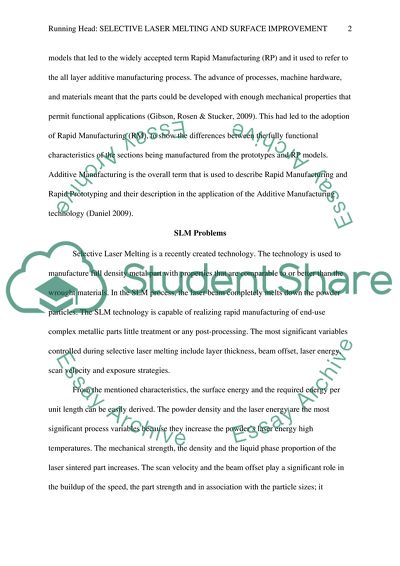Cite this document
(The Alternative Methods of Improving Surface Finish during the Term Paper, n.d.)
The Alternative Methods of Improving Surface Finish during the Term Paper. Retrieved from https://studentshare.org/engineering-and-construction/1751408-a-report-about-the-alternative-methods-of-improving-surface-finish-during-the-building-process-parts-and-post-processing-parts-in-selective-laser-melting-slm-machine
The Alternative Methods of Improving Surface Finish during the Term Paper. Retrieved from https://studentshare.org/engineering-and-construction/1751408-a-report-about-the-alternative-methods-of-improving-surface-finish-during-the-building-process-parts-and-post-processing-parts-in-selective-laser-melting-slm-machine
(The Alternative Methods of Improving Surface Finish During the Term Paper)
The Alternative Methods of Improving Surface Finish During the Term Paper. https://studentshare.org/engineering-and-construction/1751408-a-report-about-the-alternative-methods-of-improving-surface-finish-during-the-building-process-parts-and-post-processing-parts-in-selective-laser-melting-slm-machine.
The Alternative Methods of Improving Surface Finish During the Term Paper. https://studentshare.org/engineering-and-construction/1751408-a-report-about-the-alternative-methods-of-improving-surface-finish-during-the-building-process-parts-and-post-processing-parts-in-selective-laser-melting-slm-machine.
“The Alternative Methods of Improving Surface Finish During the Term Paper”, n.d. https://studentshare.org/engineering-and-construction/1751408-a-report-about-the-alternative-methods-of-improving-surface-finish-during-the-building-process-parts-and-post-processing-parts-in-selective-laser-melting-slm-machine.


